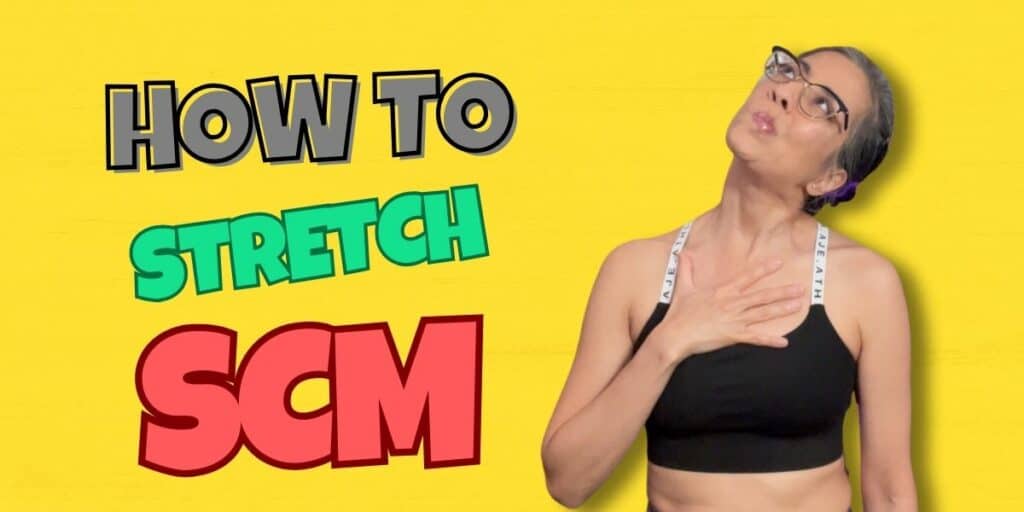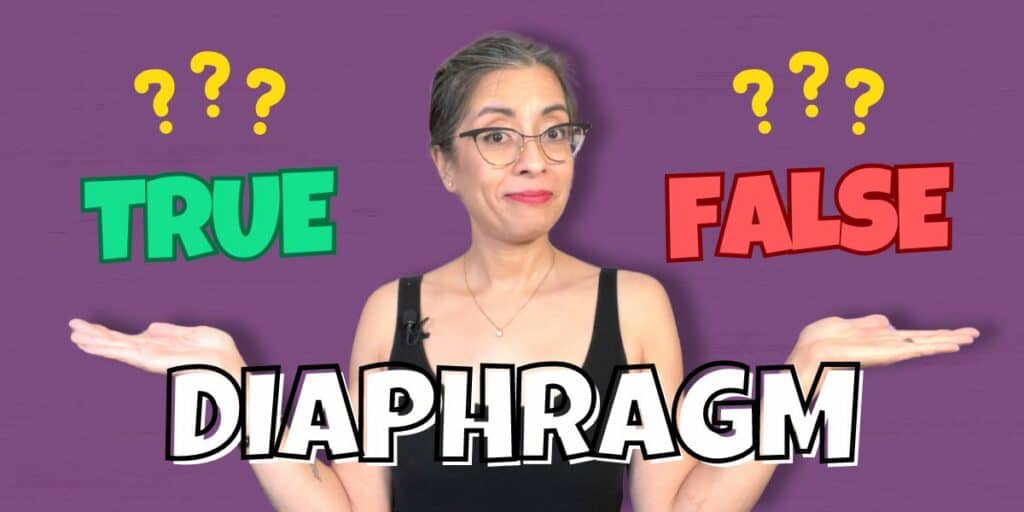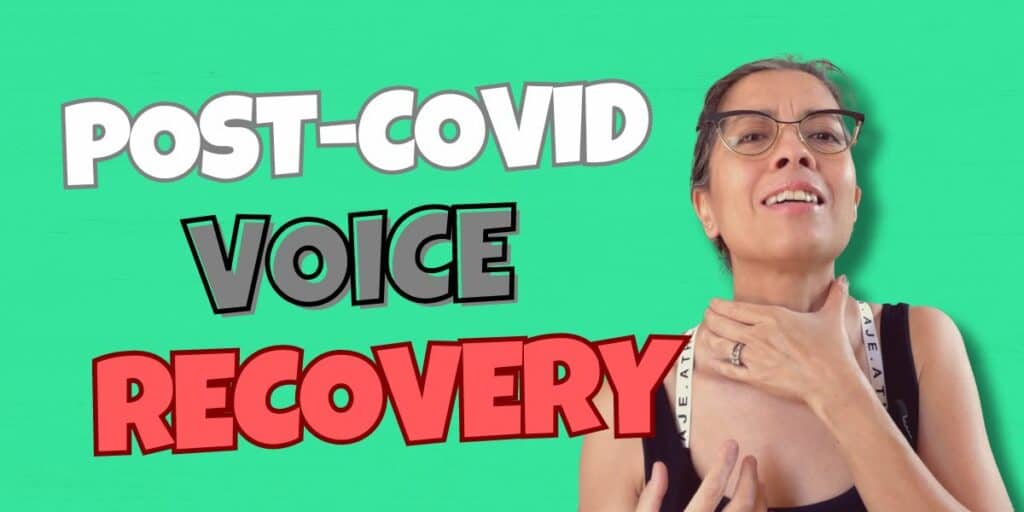Safe Larynx Stretching
In this video, Voice Physio, Selina, show singers how to stretch larynx safely and effectively by using Anchor Point and Movement Bias. She also runs through the anatomy of the larynx, what really is being stretched, and the 2 don’ts for laryngeal stretching.
Like This Post?
Never miss a post.
Get our blog posts delivered straight to your inbox!
You May Also Like: The 7 Keys To Flexibility
Follow @voice-physio on Instagram for bite-sized content made for singers!
’Til next time, Be Free In Your Movement™.
x
Selina
B. Phty
This information is not medical advice. Got health concerns? Consult a real-life health professional.
Views are my own.
*Affiliate links. Your choosing to use these goes towards supporting my content creation. Thank you.
Stretching the larynx is very popular among singers, but your larynx isn’t a muscle, and stretching means to take the two ends of a muscle and move them as far apart as you can, but your larynx isn’t a muscle! It is a few pieces of cartilage held together by ligaments, muscles, and your vocal folds sit inside this “little box”, so what really are you stretching? And can it even be stretched?
Your larynx is suspended in front of your neck inside a muscular tube, below the larynx it is connected to your sternum and your shoulder blades by muscles, above the larynx it is connected to your hyoid bone by ligaments and muscles, your hyoid bone is connected to your jaw, your tongue, and your skull by muscles, your tongue is a ball of muscle itself and it is connected to your hyoid bone, your jaw and your skull by, your guessed it, more muscles.
Because of these complex muscular connection the position of the larynx is influenced by all these muscles, and you can absolutely stretch muscles. So stretching your larynx really means stretching all these muscles.
But how do we stretch a muscular tube? Well, by using Anchor Point and Movement Bias we can target different parts of the tube, but more on that shortly, safety first, let’s first talk about what not to do.
I do not encourage people to hold a sustained neck extension stretch unless they have specifically trained for it for two reasons.
First reason, when you extend your neck you are also stretching blood vessels and these blood vessels take blood to and from your brain, so if you’re not used to holding your neck in this position or you are sensitive to this movement, it can make you dizzy, which is not nice and can also be very disorienting and even scary for some people, and you absolutely do not want to make yourself pass out from stretching!
Second reason, most people don’t have the mobility and proprioception to do a proper neck extension, and amongst those who can do a proper neck extension, most don’t have the strength to bring their head back up properly. What does that mean?
This is a proper neck extension, the ears go behind the shoulders from the get go, most people hinge mid neck then collapse and flop, with their ears either staying on top of, or in front of the shoulders the whole time, and this tend to irritate people’s neck.
For those who can extend their neck properly, most don’t have the strength to bring their head back up with good control and they tend to squish and hitch up the shoulders to help, which is a strain to the neck.
It is very common for people’s neck to tighten up as a protective respond to this strain, which is counterproductive when you’re trying to loosen things up.
These are the reason why I believe it is safer and more effective to do a Repeated Active Neck Extension within your currently accessible range of movement instead.
The key, the foundation movement here is to do a proper neck extension, so ears going behind the shoulder the whole time, and to have enough juice to come back up nicely. No chicken heads.
When we can do this foundation movement properly, we can then think about the Anchor and Movement Bias.
Remember your larynx is connected by muscles to the sternum and shoulder blades, and stretching means to take the two ends of the muscle and move them as far apart as you can.
To help us do that we can anchor down the sternum and also squeeze the shoulder blades together to help anchor down the bottom end of the tube, so I am pushing in and pulling down on my sternum and then gently squeezing my shoulder blades together just a little bit.
Once I’ve anchored down, I then do three Active Neck Extension. It is totally normal for there to be less extension available now. As I’m moving I’m paying attention to how it feels, where I feel it from, so I can compare it with the other bias later.
The second Movement Bias come from the jaw. We still want to anchor the sternum, but before extending the neck I pull my bottom lip up as much as I can and hold it there, then I do three Repeated Active Neck Extension. It is highly likely for there to be even less extension available now. Again I am paying attention to what I feel where, so I can compare the bias. Hmm this one hits different for me.
The next Movement Bias comes from the tongue. I’m going to curl my tongue under and tuck it behind my bottom front teeth, then it’s rinse and repeat. I anchor my sternum down, squeeze my shoulder blades together a little and I do three Repeated Active Neck Extension. Once again paying attention to how much movement I have and how this feel, where I feel it.
The last Movement Bias comes from the mouth. We move from a big wide ahh to a small narrow ooh, like a wolf howl. You know the drill now, Anchor then Move.
To finish, I repeat the one that feels at this particular moment in time the most tight or most restricted, which for me was the Jaw Bias.
And this will change, what feels the tightest and most restricted will change depending on a multitude of reasons, but by using different Bias we can be much more specific in targeting the areas that need the most help.
So that is what I believe to be a safe and effective way to “stretch” your larynx, by doing an active movement instead of holding a sustained stretch, and by using Anchor and Movement Bias to really target those tight spots.
If you’ve found this useful please let me know with a thumb up. I’m Selina, a physio and a singer. I help singers Move Better to Sing Better so if that is your vibe please subscribe. And this is the playlist I have made just for singers so make sure you check it out. Until next time, Be Free In Your Movement.™







